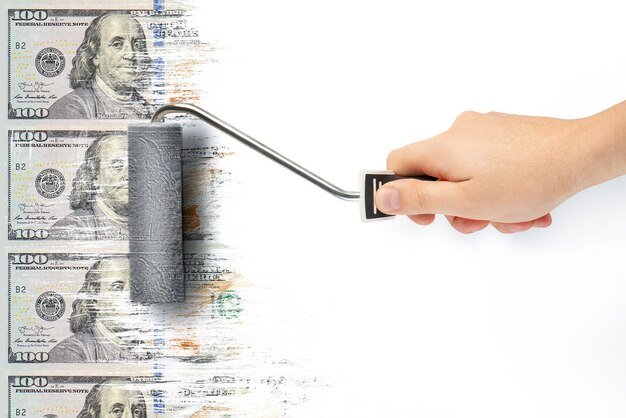Affordable Wallpaper Removal: Cost-Saving Tips and Methods
Introduction
Wallpaper removal is an essential step in home renovation, whether you’re updating a room or preparing walls for a fresh coat of paint. While hiring a professional can be convenient, the costs can add up quickly, making a DIY approach an attractive option for budget-conscious homeowners. Understanding the factors that influence expenses, such as wall condition and wallpaper type, can help you choose the most economical method. By using smart techniques and the right tools, you can achieve a smooth, wallpaper-free surface without overspending.
The key to saving money on wallpaper removal lies in assessing the complexity of the job and deciding whether to tackle it yourself or hire an expert. Some wallpapers peel off easily, while others require steaming or chemical solutions. Additionally, underlying wall damage may increase repair costs, so it’s crucial to plan ahead. This guide explores budget-friendly strategies, essential tools, and when it’s worth investing in professional services to ensure a cost-effective and efficient process.
Factors Affecting Wallpaper Removal Cost

The type of wallpaper you’re removing plays a major role in determining the overall expense. Vinyl wallpapers are often easier to strip compared to traditional paper-backed varieties, which may require steaming or soaking. Fabric-based wallpapers, on the other hand, can be tricky to remove without damaging the underlying drywall. Additionally, if the wallpaper was applied over multiple layers, the process becomes more labor-intensive, increasing costs whether you hire a pro or do it yourself. Another factor is the wall’s condition—if the surface has cracks, old adhesive residue, or peeling paint, extra prep work will be needed before repainting.
The size of the room and the complexity of removal also impact pricing. High ceilings, intricate trim, and hard-to-reach corners add time and effort, raising labor fees for professionals. A DIY approach may save money, but renting a steamer or purchasing stripping solutions can still add up. Finally, deciding between hiring a contractor or handling the job yourself depends on your skill level and available time. While professionals guarantee a smooth finish, DIY methods with basic supplies can be just as effective for simpler projects.
Average Wallpaper Removal Costs

Hiring a professional for wallpaper removal typically costs between 1to4 per square foot, depending on your location and the wallpaper’s stubbornness. For a standard 12×12 room (144 sq. ft.), this translates to 144–576, with higher rates for textured or multi-layered wallpapers. Some contractors charge hourly fees ranging from 50to100, especially if extensive wall repairs are needed afterward. Always request a detailed quote to avoid hidden charges like disposal fees or additional prep work before repainting.
For a DIY approach, costs are significantly lower, averaging 50–150 for tools and materials. A wallpaper steamer rental runs about 30–50 per day, while chemical strippers cost 10–20 per bottle. Essential tools like scrapers, scoring tools, and spray bottles may add another 20–40. However, unexpected damage to drywall or prolonged labor can increase expenses if you later need professional repairs. Weighing the upfront savings against potential risks helps determine whether DIY is truly cost-effective for your project.
DIY Wallpaper Removal: Budget-Friendly Methods

One of the most effective DIY approaches involves using a simple solution of hot water and dish soap. This mixture helps loosen the adhesive when sprayed onto the wallpaper and left to soak for 10-15 minutes. For stubborn wallpaper, adding white vinegar (equal parts water and vinegar) boosts effectiveness without harsh chemicals. Another popular trick is using diluted fabric softener, which breaks down glue residue while leaving walls smooth and ready for repainting. Always test these solutions on a small section first to ensure they won’t damage your walls.
For more resistant wallpaper, renting a steamer provides professional-level results at a fraction of the cost. Steamers work by penetrating the wallpaper’s backing, softening the adhesive for easy scraping. Before steaming, use a scoring tool to create tiny holes in the wallpaper, allowing moisture to reach the glue faster. Work in manageable 3×3 foot sections to prevent the wall from becoming oversaturated, which could damage drywall. Pairing a steamer with a wide putty knife ensures clean removal while minimizing repair work later.
Essential Tools for Cost-Effective Wallpaper Removal

Having the right equipment makes wallpaper removal faster and prevents unnecessary wall damage. Start with a high-quality scraper – a 4-inch putty knife works well for most jobs, while a wider 6-inch blade covers more surface quickly. For textured or thick wallpaper, a scoring tool creates tiny perforations that help steam or solution penetrate the adhesive more effectively. A sturdy spray bottle is essential for applying DIY removal solutions evenly without oversaturating the drywall.
For tougher jobs, consider investing in a multi-tool with scraping and scoring attachments. A pump sprayer (15−25) works better than bottles for large areas, while a tray and roller can help apply stripping solutions efficiently. Don’t forget safety gear – gloves protect hands from chemicals, and goggles prevent steam burns to your eyes. Keep a sponge and bucket nearby for quick cleanups, and have joint compound ready for minor wall repairs as you work.
Tips to Save Money on Wallpaper Removal

Start by testing removal techniques in an inconspicuous corner to determine the most efficient method before committing to the entire wall. This prevents unnecessary waste of materials and avoids potential damage that could lead to costly repairs. Reuse household items like old credit cards as small scrapers or repurpose window squeegees as wide scraping tools to avoid buying specialty equipment. Working in small sections (about 3×3 feet) allows better control and prevents the wall from becoming too saturated, which can weaken drywall and create extra work.
Consider partial removal as a creative solution – instead of stripping every wall, you might remove just one accent wall and repaint it for a fresh look. Time your project during home improvement stores’ off-season sales (typically winter) when tool rentals and supplies are often discounted. If using a steamer, coordinate with neighbors for a shared rental to split costs. Keep leftover removal solutions in labeled containers for future touch-ups or other household projects to maximize your investment.
When to Hire a Professional (and How to Save on Costs)

Certain situations demand expert intervention, like when dealing with multiple wallpaper layers applied over plaster walls, which require specialized techniques to prevent structural damage. If you encounter mold growth during removal or discover asbestos-containing materials, immediately stop DIY efforts and consult licensed contractors for safe remediation. Professionals also excel at handling delicate surfaces like historic walls or textured finishes where amateur attempts might cause irreversible harm.
To save on professional services, get at least three detailed quotes and ask about package deals if you’re also repainting. Many companies offer discounts during their slower seasons (typically January-February). Negotiate by offering flexible timing or preparing walls yourself (removing furniture, baseboards). Some contractors provide partial services – you might hire them just for difficult areas like high ceilings, then handle simpler walls yourself to balance quality and savings. Always verify the pro’s credentials and read reviews to avoid paying for subpar work that needs expensive corrections.
Conclusion: Smart Strategies for Affordable Wallpaper Removal

Successful wallpaper removal combines the right approach with cost-conscious decisions to achieve professional results on a budget. Whether you choose DIY methods or selective professional help, understanding your walls’ condition and the wallpaper’s type ensures you pick the most economical solution. For simple projects, homemade solutions and basic tools often suffice, while complex cases may warrant strategic investments in equipment or expert services.
Remember that proper preparation and patience during removal prevent costly wall repairs later. By testing techniques, reusing tools, and timing your project wisely, you can transform your space without overspending. Evaluate both your skill level and the job’s demands – sometimes spending a little more upfront on a pro saves money compared to DIY mistakes. Whatever path you choose, these money-saving tactics will help you refresh your walls efficiently while keeping your renovation budget intact.



